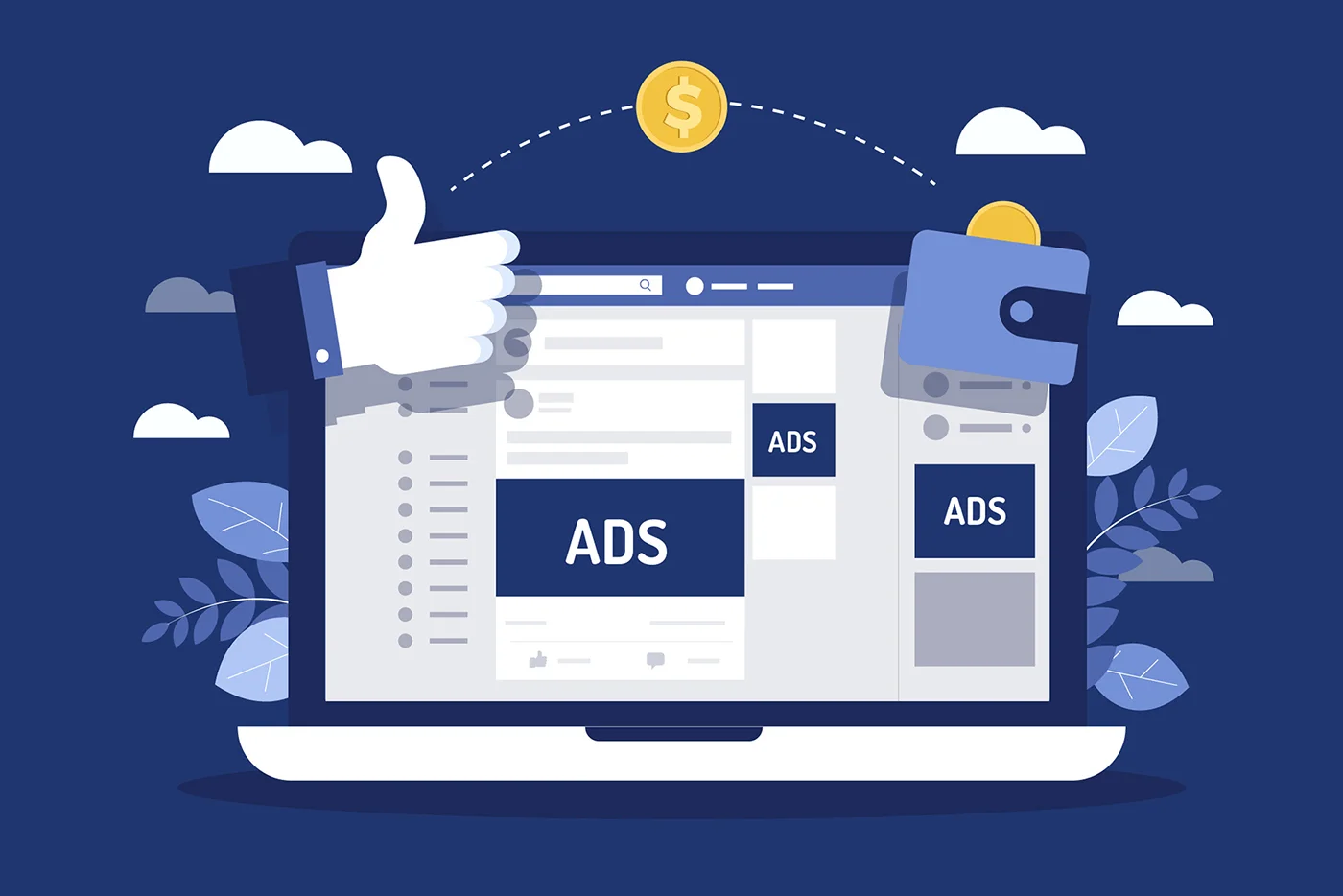Introduction to Facebook and Instagram’s new ad-free subscription option
Experience the Serenity of Meta’s Ad-Free Bliss: Are you tired of scrolling through your Facebook and Instagram feeds, only to be bombarded with ads at every turn? Well, the good news is that Facebook and Instagram have heard your frustrations and are now offering an ad-free subscription option in Europe! Yes, you read that right – no more pesky ads interrupting your browsing experience.
In this blog post, we’ll dive into what motivated this change, the benefits of an ad-free experience for users like yourself, privacy concerns and data collection implications, how the subscription model will work, potential impact on businesses and influencers, comparison to other platforms offering ad-free options…and so much more! So sit back, relax (without those annoying interruptions), and let’s explore this exciting development in social media advertising together. Let the bliss begin!
Table of Contents
What motivated this change?
One of the key motivations behind Facebook and Instagram’s new ad-free subscription option is to provide users with a more personalized and enjoyable experience on these platforms. With the increasing concerns over privacy and data collection, many people are becoming wary of the constant bombardment of ads that disrupt their browsing experience.
By offering an ad-free subscription model, Facebook and Instagram aim to address these concerns and give users greater control over their online experience. This change reflects a growing understanding within Meta (formerly known as Facebook) that user satisfaction should be prioritized over excessive advertising revenue.
Moreover, this move also signifies a shift in social media monetization strategies. Rather than solely relying on targeted ads for revenue generation, Facebook and Instagram are exploring alternative avenues to meet user demands while still remaining profitable.
In addition, this change aligns with the evolving preferences of today’s consumers who value convenience and customization. By allowing users to opt for an ad-free experience, these platforms can cater to individuals who are willing to pay for uninterrupted browsing without compromising their privacy.
By introducing an ad-free subscription option, Facebook and Instagram demonstrate their commitment towards enhancing user satisfaction while adapting to changing market dynamics.
The benefits of an ad-free experience for users
The benefits of an ad-free experience for users are numerous and significant. It eliminates the constant interruption caused by ads while scrolling through your feed. Without ads popping up every few seconds, users can enjoy a seamless and uninterrupted browsing experience.
An ad-free environment reduces the chances of falling prey to targeted advertising. With fewer personalized ads appearing on their screens, users can maintain a sense of privacy and control over their online activities. This helps alleviate concerns about data collection and potential invasion of privacy.
Moreover, an ad-free experience allows users to focus solely on the content that matters to them. Instead of being bombarded with sponsored posts or promotional messages, they can engage more deeply with the posts from friends, family members, or favorite brands they follow.
Furthermore, without ads cluttering their feeds, users can navigate through Facebook and Instagram more quickly and efficiently. They won’t have to wait for advertisements to load before accessing the content they actually want to see.
Embracing an ad-free subscription offers users a cleaner user interface devoid of distractions while preserving their privacy and enhancing their overall social media experience
Privacy concerns and data collection implications
Privacy concerns and data collection implications have been hot topics in the digital world for quite some time. With the launch of Facebook and Instagram’s ad-free subscriptions, these concerns have taken center stage once again. Users are becoming increasingly aware of how their personal information is being used, and many are concerned about the potential misuse or mishandling of their data.
One major concern is that by opting for an ad-free experience, users may inadvertently be giving up even more privacy. Without targeted ads, social media platforms may need to find other ways to generate revenue – potentially through increased data collection. This raises questions about what kind of personal information will be collected and how it will be used.
Additionally, there is the issue of transparency. Will Facebook and Instagram clearly inform users about what data they collect and how it will be utilized? Transparency plays a crucial role in building trust between users and platforms, so it’s essential for companies to provide clear explanations regarding data practices.
Furthermore, there are worries about whether user data could fall into the wrong hands or be vulnerable to security breaches. The more personal information that is collected, the greater the risk becomes.
While an ad-free experience may seem appealing on the surface due to privacy concerns related to targeted ads, users also need reassurance that their personal information won’t be exploited or compromised in other ways
How the subscription model will work
Facebook and Instagram’s new ad-free subscription model aims to provide users with a seamless and uninterrupted experience on the platforms. But how exactly will this subscription model work?
To access an ad-free version of Facebook and Instagram, users will have the option to subscribe for a monthly fee. This subscription will remove all ads from their feed, allowing them to enjoy content without any interruptions. The absence of ads means that users can scroll through their timelines or explore feeds without being bombarded by promotional content.
The subscription model also promises enhanced privacy features. Subscribers will have more control over their data, as they won’t be targeted based on their browsing habits or interests for advertising purposes. This increased privacy may appeal to those who are concerned about data collection and want a more secure online experience.
In terms of implementation, Facebook and Instagram plan to roll out this feature gradually across Europe. Users will be able to choose whether they want to opt for the ad-free subscription or continue using the platforms with advertisements.
It is important to note that while this new subscription model benefits users seeking an ad-free experience, it may impact businesses and influencers heavily reliant on advertisement revenue. With fewer ads reaching users’ screens, brands may need to reevaluate their marketing strategies on these platforms.
Facebook and Instagram‘s introduction of an ad-free subscription option demonstrates their commitment towards providing choice and customization for users’ experiences while addressing concerns around privacy in today’s digital landscape
Potential Impact on Businesses and Influencers
The introduction of ad-free subscriptions on Facebook and Instagram has the potential to significantly impact businesses and influencers who rely on advertising as a means of promoting their products or services. With users now having the option to pay for an ad-free experience, it is likely that they will opt for this choice, leading to a decrease in the number of people seeing ads.
For businesses, this could mean a decline in visibility and reach. Without ads appearing in users’ feeds, companies may struggle to attract new customers or generate leads through these platforms. Additionally, influencers who collaborate with brands for sponsored content may face challenges as their posts won’t reach as wide an audience without targeted advertisements.
However, there are also opportunities that arise from this change. With fewer ads competing for attention, those businesses and influencers who choose not to subscribe can potentially stand out more among organic content. This could lead to higher engagement rates and stronger connections with followers.
Furthermore, by offering ad-free subscriptions, Facebook and Instagram may be able to generate additional revenue streams beyond traditional advertising. This could open up new possibilities for partnerships between platforms and businesses or influencers looking to offer exclusive content or experiences within the subscription model.
While there may be some initial concerns about how this change will impact businesses and influencers heavily reliant on advertising revenue from these platforms, it is important not to overlook the potential benefits that lie within this new ad-free landscape. Adapting strategies accordingly can help mitigate any negative effects while capitalizing on the unique opportunities presented by this shift in social media monetization.
Comparison to Other Social Media Platforms Offering Ad-Free Options
When it comes to social media platforms, Facebook and Instagram are not the only ones offering ad-free options. In fact, several other platforms have already ventured into this territory.
One of the most notable examples is YouTube. With its premium subscription service called YouTube Premium, users can enjoy an ad-free experience while watching videos. Additionally, they get access to exclusive content and the ability to download videos for offline viewing.
Another platform that offers an ad-free option is Twitter. The company introduced a paid subscription called Twitter Blue which provides users with enhanced features such as undoing tweets and organizing bookmarks. While it doesn’t completely remove ads from the platform, it does offer a more streamlined experience for subscribers.
Even Reddit has jumped on the bandwagon by introducing Reddit Premium. This subscription removes ads across the entire platform and grants users access to exclusive features like custom avatars and badges.
While these platforms may share some similarities in their ad-free offerings, each one brings something unique to the table. It ultimately boils down to personal preference and what features are most important to individual users.
As more social media platforms explore alternative monetization strategies, we can expect even more innovative approaches in the future. The competition among these platforms will likely lead to better user experiences overall as they strive to attract and retain subscribers.
In conclusion (as per your instructions), there is no one-size-fits-all solution when it comes to choosing an ad-free social media platform. Each platform has its own strengths and weaknesses, so it’s important for users to weigh their options carefully before making a decision based on their specific needs and preferences.
Is this the future of social media monetization?
Is this the future of social media monetization? It’s a question that many industry experts and users alike have been pondering since Facebook and Instagram announced their ad-free subscription option. While it may be too soon to definitively answer, one thing is clear: this move marks a significant shift in the way social media platforms generate revenue.
Traditionally, platforms like Facebook and Instagram have relied heavily on advertising as their primary source of income. However, with growing concerns over privacy and data collection practices, users are increasingly seeking alternatives that offer a more personalized and ad-free experience.
By introducing an ad-free subscription model, Facebook and Instagram are tapping into this demand while also providing an avenue for sustainable monetization. For a monthly fee, users can enjoy uninterrupted browsing without being bombarded by targeted ads or sponsored content.
This new approach not only benefits users who prefer an ad-free experience but also opens up opportunities for businesses and influencers. With fewer distractions competing for attention, brands can create more meaningful connections with their target audience through organic content.
Of course, this begs the question: how will other social media platforms respond? Will they follow suit and introduce similar ad-free options in order to stay competitive? Only time will tell.
In any case, it’s clear that user preferences are shifting towards greater control over their online experiences. Whether or not this becomes the dominant model for social media monetization remains to be seen. But one thing is certain – change is on the horizon.
Consumer Reactions and Feedback
Since the announcement of Facebook and Instagram’s ad-free subscription option, consumers have been buzzing with mixed reactions. Some users are thrilled at the prospect of a more enjoyable browsing experience without intrusive ads constantly popping up in their feeds. They see this as an opportunity to escape the relentless bombardment of advertisements and focus on what truly matters – connecting with friends, discovering new content, and exploring their interests.
On the other hand, there are those who express concerns about the implications of this new model. Will it lead to a two-tier system where only those who can afford subscriptions get access to an ad-free experience? Will it create a divide among users based on financial means?
Feedback from users also highlights potential challenges for businesses and influencers who heavily rely on advertising revenue. With fewer ads shown to subscribers, reaching a wider audience may become more difficult for them. However, others argue that by removing distractions caused by ads, brands will need to find alternative ways to engage with their target audience through high-quality content or sponsored partnerships.
It is important to note that while some social media platforms like YouTube already offer ad-free options through paid subscriptions, Facebook and Instagram’s move into this space signals a shift towards user-centric monetization models across multiple platforms.
As these changes roll out in Europe and potentially expand globally in the future, it remains uncertain whether this ad-free subscription model will become the dominant trend in social media monetization or if other innovative solutions will emerge.
Ultimately though, consumer reactions show that there is demand for alternatives when it comes to navigating online spaces saturated with advertisements. The success or failure of these ventures will ultimately depend on how well they strike a balance between user preferences for an uninterrupted experience while still allowing businesses opportunities for growth.
Conclusion : Experience the Serenity of Meta’s Ad-Free Bliss
With the introduction of ad-free subscriptions on Facebook and Instagram, Meta aims to provide a more seamless and enjoyable user experience. This new feature comes as a response to users’ growing desire for an escape from advertisements that clutter their feeds.
By offering users the option to subscribe to an ad-free version of these platforms, Meta hopes to address privacy concerns and alleviate some of the data collection implications associated with targeted advertising. Users can now enjoy scrolling through their newsfeeds without being bombarded by sponsored posts or intrusive ads.
The benefits of an ad-free experience are clear – a cleaner interface, faster loading times, and less distractions while browsing. Users will have more control over what they see on their social media feeds, allowing them to focus on meaningful content shared by friends and family.
However, this move towards subscription-based models raises questions about its impact on businesses and influencers who heavily rely on targeted advertising for reach and revenue. As brands may no longer have access to the same level of visibility within users’ newsfeeds, it remains uncertain how this shift will affect marketing strategies in the long run.
Facebook’s decision also puts it in direct competition with other social media platforms that already offer ad-free options such as Twitter’s “Twitter Blue” subscription service. It will be interesting to see how these different platforms differentiate themselves amidst evolving consumer preferences for personalized online experiences.
While this new subscription model is certainly promising for users seeking respite from ads, only time will tell if it becomes the future standard for social media monetization. The success or failure of this endeavor depends largely on user adoption rates and feedback from consumers across Europe.
As Facebook continues its journey toward creating more engaging experiences for its vast user base, one thing is certain – Meta’s commitment to providing an ad-free bliss marks a significant step forward in reshaping the landscape of digital advertising.







